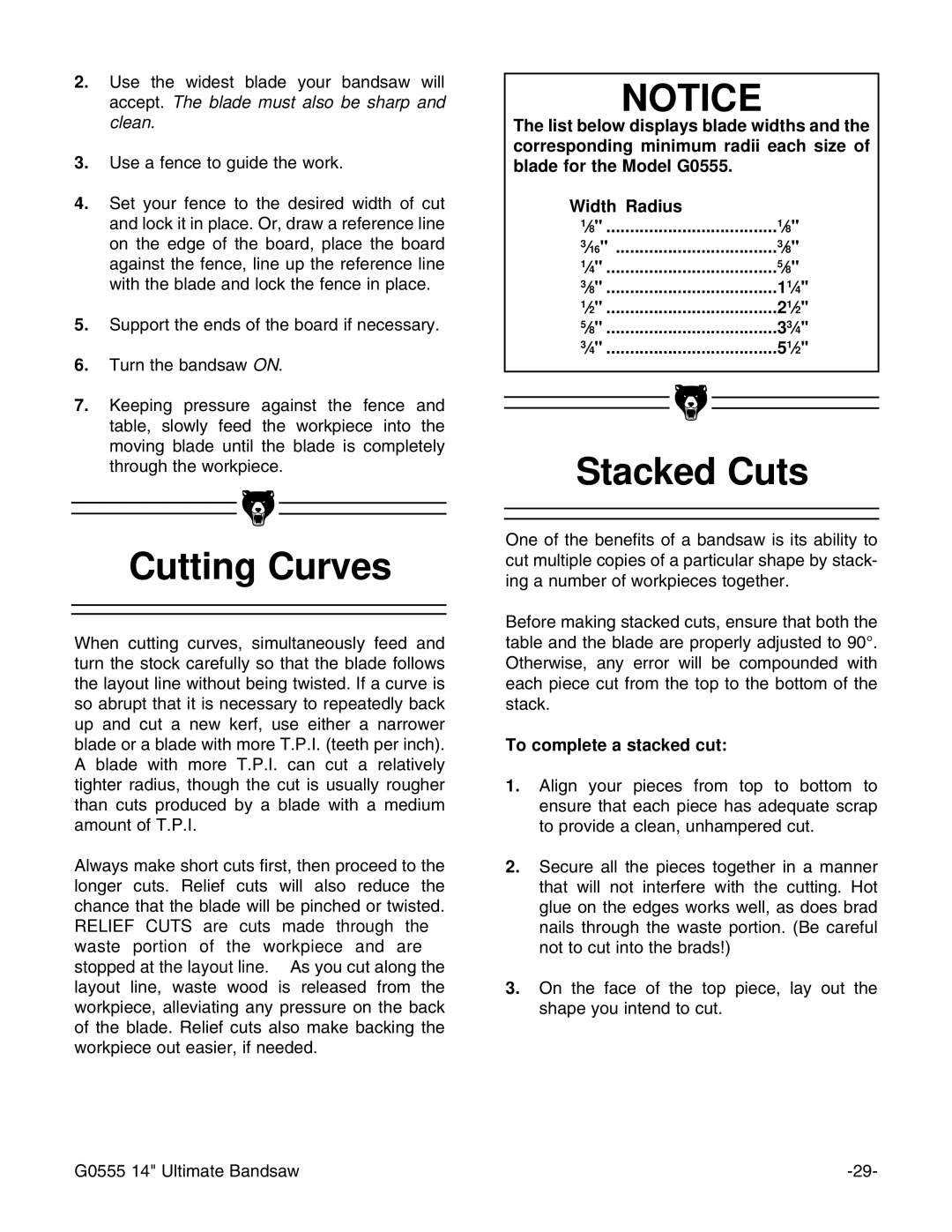
2.Use the widest blade your bandsaw will accept. The blade must also be sharp and clean.
3.Use a fence to guide the work.
4.Set your fence to the desired width of cut and lock it in place. Or, draw a reference line on the edge of the board, place the board against the fence, line up the reference line with the blade and lock the fence in place.
5.Support the ends of the board if necessary.
6.Turn the bandsaw ON.
7.Keeping pressure against the fence and table, slowly feed the workpiece into the moving blade until the blade is completely through the workpiece.
Cutting Curves
When cutting curves, simultaneously feed and turn the stock carefully so that the blade follows the layout line without being twisted. If a curve is so abrupt that it is necessary to repeatedly back up and cut a new kerf, use either a narrower blade or a blade with more T.P.I. (teeth per inch). A blade with more T.P.I. can cut a relatively tighter radius, though the cut is usually rougher than cuts produced by a blade with a medium amount of T.P.I.
Always make short cuts first, then proceed to the longer cuts. Relief cuts will also reduce the chance that the blade will be pinched or twisted.
RELIEF CUTS are cuts made through the waste portion of the workpiece and are stopped at the layout line. As you cut along the layout line, waste wood is released from the workpiece, alleviating any pressure on the back of the blade. Relief cuts also make backing the workpiece out easier, if needed.
NOTICE
The list below displays blade widths and the corresponding minimum radii each size of blade for the Model G0555.
Width Radius
1⁄8" | 1⁄8" | |
3⁄16" | 3⁄8" | |
1⁄4'' | 5⁄8'' | |
3⁄8'' | 1⁄14'' | |
1⁄2'' | 1⁄2'' | |
5⁄8'' | 3⁄34'' | |
3⁄4'' | 1⁄52'' | |
|
|
|
|
|
|
|
|
|
|
|
|
Stacked Cuts
One of the benefits of a bandsaw is its ability to cut multiple copies of a particular shape by stack- ing a number of workpieces together.
Before making stacked cuts, ensure that both the table and the blade are properly adjusted to 90¡. Otherwise, any error will be compounded with each piece cut from the top to the bottom of the stack.
To complete a stacked cut:
1.Align your pieces from top to bottom to ensure that each piece has adequate scrap to provide a clean, unhampered cut.
2.Secure all the pieces together in a manner that will not interfere with the cutting. Hot glue on the edges works well, as does brad nails through the waste portion. (Be careful not to cut into the brads!)
3.On the face of the top piece, lay out the shape you intend to cut.
G0555 14" Ultimate Bandsaw |
